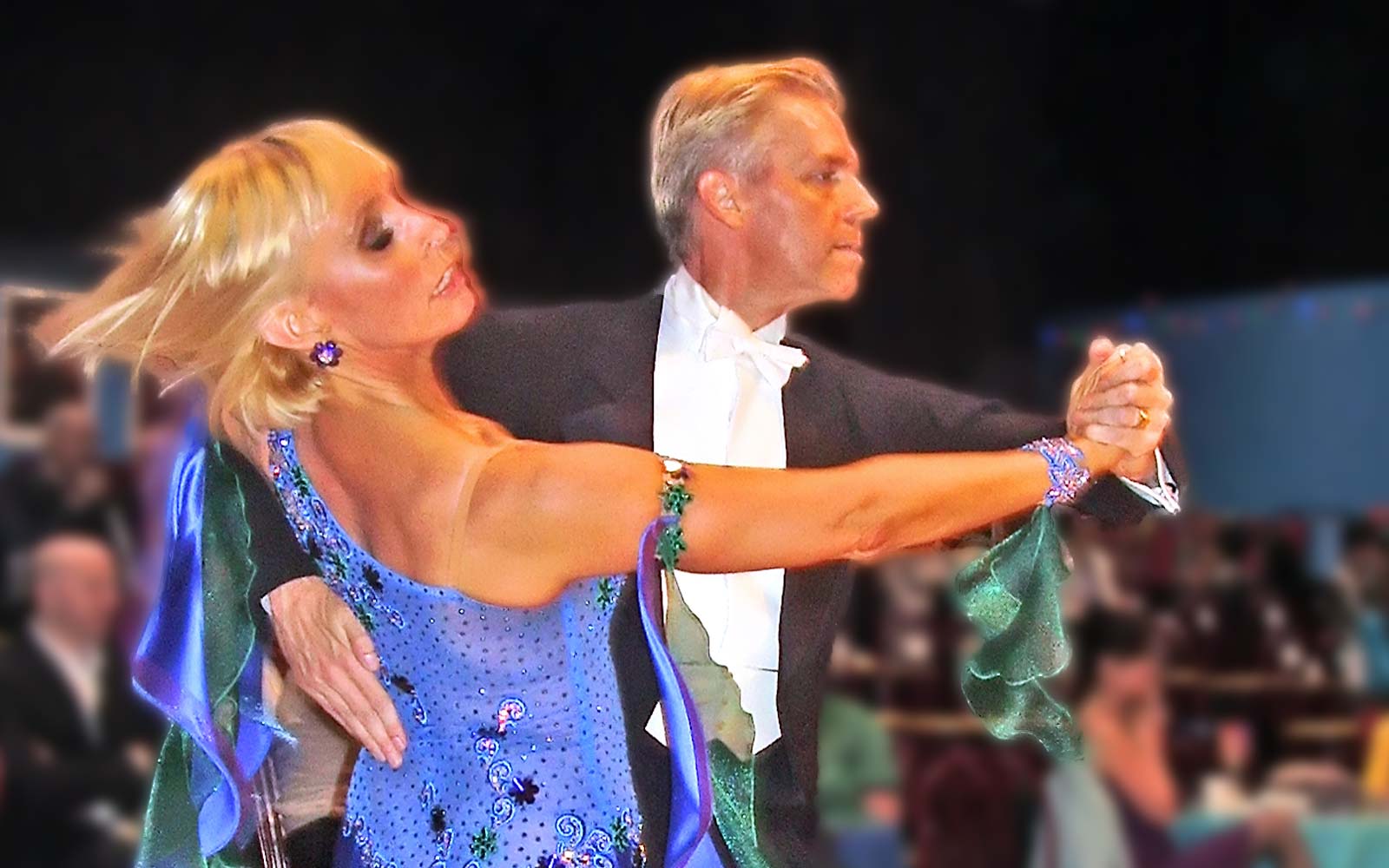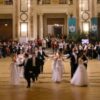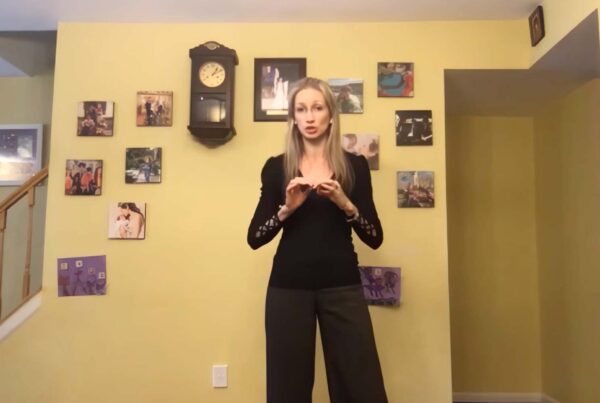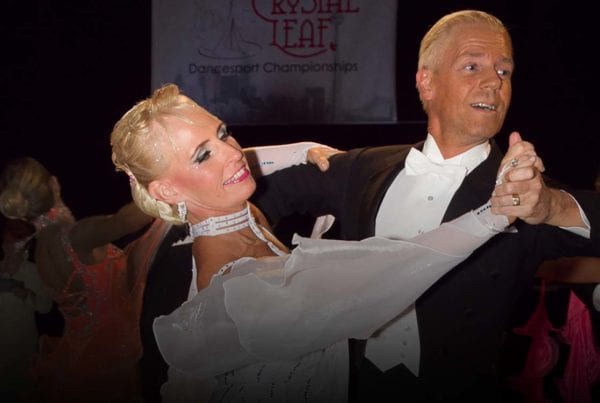As ballroom icon Alex Moore has pointed out, the International-style Tango is a deceptive dance. It contains surprisingly simply step patterns, overlaid with a number of important technical factors that give the dance its unique look and character.
According to exhaustive research by Mark Knowles in the book The Wicked Waltz and Other Scandalous Dances, the Tango originated primarily in Argentina. In early Buenos Aires, street duels were common as social tensions escalated between immigrants, in particular the Italians, and the creole compadritos. These fights, known as the duelo criollo, were “highly ritualized, and the type of knife chosen and the type of wounds inflicted indicated the level of respect or disrespect each fighter had for his opponent. Eventually, the Tango replaced the knife, and the level of respect was indicated by the Tango’s lyrics and the complexity of Tango steps.” In that sense, the Tango evolved as a challenge dance in much the same way as break dancing did in North America. It was raw and sensual.
In 1906, a group of entertainment agents and dance teachers from Paris saw these figures and took the concept back to France, where they developed what we now recognize as a beautiful partner dance.
While the Argentine Tango continues the key characteristics of the original form of Tango, British dancers created the International style version, a less sensual form that is better suited to social dancing with strangers in western cultures. This is the version that Alex Moore developed into a codified form in 1963.
Moore himself points out that while the steps can be learned easily, the character of the dance is elusive, and that many dancers try too hard to create what they interpret as its staccato and aggressive qualities.
Unique Ballroom dance
The Tango is an entirely different type of dance from the other ballroom dances. It’s construction is comparatively simple owing to the fact that more walking steps are used, thus giving the dancer time to think which figure to use next.
Yet there are things about the way this walking action takes place that are utterly foreign to how we normally walk. Every forward step taken with the left foot must be placed on the line of the right foot, yet with the right side leading. Likewise, every backward step with the right foot must be placed on the line of the left foot. The feet lift off the floor where in the other dances they glide in constant contact.
The knees are kept slightly bent throughout the dance, leading to a very level and horizontal style of movement as compared to having rise and fall. There is no sway, since there is no swing action. The hold is different, to accommodate the sudden changes of direction or movement.
many dancers try too hard to create what they interpret as its staccato and aggressive qualities
Body Flight
What seems to be most elusive is the smooth quality of body flight. Dancers try so hard to create the staccato movement which gives the dance its unique accents that they end up making everything hard and rigid. As a result, you end up seeing nothing staccato, just constant, stiff accents. Great Tango consists of long, smooth movement accented periodically with sudden changes of direction or head turns. In this way, we should be noticing these actions only intermittently and only by the lady. The man should be largely unnoticed, providing the framework for the lady’s head turns, stretch and accents to be the highlights of the dance. Yet what usually happens is that the man’s actions are so excessive that you don’t even see the lady!
Tango Walks
When performing Tango Walks, one should take care to allow the ball of the moving foot to skim the floor until it passes the standing foot, yet to avoid exaggerating this action. One must also avoid leaving the back foot in place too long, as this would result in a loss of continuity. When the foot does move, it must move quickly in order to be in position on the next beat of the music. Many dancers tend to pause the moving foot underneath their body before moving it on, which takes away rather than adding to the legato quality we want to achieve.
The action of the step comes from the hip, not from the knee only, but the swinging action of the other dances is not used in Tango. Many steps are taken with the “inside edge” of the foot arriving in place before the rest of the foot, again due to the lack of swing action.
Another aspect of Tango that is quite unusual as it compares to other dances is that alignment and direction are not the same. Usually in this dance, alignment of the feet and direction of travel will be different due to the curving, right-side-leading energy of forward movements. The feet might be aligned diagonal to the wall while the direction of travel might be down the line of dance.
Musical Interpretation
Tango music is also misunderstood. Tango is counted in 2/4 time, which means that there are technically two beats to one bar of music. And because it is 2/4 instead of 4/4, what we hear as two beats is actually one Tango beat. This can be somewhat confusing to new dancers. A slow is essentially one beat of music while a quick is half a beat, but when we hear the music a slow represents two percussion beats due to the timing interpretation.
Closing of the Feet
The final technical detail I’ll mention here is that closing of the feet also differs from the other ballroom dances. Instead of bringing the two feet together with the toes essentially lined up, a Tango close is to place the ball of the right foot into the curve of the instep of the left foot, roughly 2cm (1 inch) from the left foot. Thus, when the feet are diagonal to the line of dance, the toes will actually be lined up with the line of dance, while the right knee is ever so slightly positioned behind the left knee.
As you can see, much of what makes the Tango look so great are these subtle technical differences. When we master these basics, our Tango improves immensely and we can enjoy the full essence of this exciting and interesting dance.
You might also like The year the world went Tango Mad













